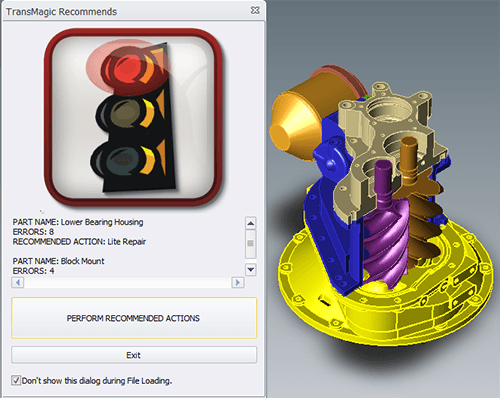
by Brad Strong | Apr 12, 2016 | Blog, CAD Diagnostics, CAD Repair, CAD Translation, What's New
The Red Light and Error Feedback Note: This is the second article on Diagnostic Tools for CAD Files. This article focuses on what happens when you use the Auto Repair Wizard to repair a model and get the ‘red light’. Click here to access the first post in this series, Diagnostic Tools for CAD Files Part 1. The Red Light: Whereas the yellow light indicates open circuits where geometry is missing, the red light indicates more extreme problems such as bad vertices, bad edges, or self-intersections. Some of these problems can be fixed with Lite Repair, and some require Full Repair. Let’s look at a specific example (see figure 1). This SAT file has...
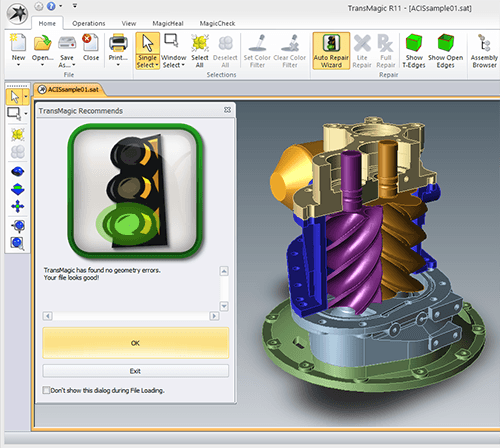
by Brad Strong | Apr 5, 2016 | Blog, CAD Diagnostics, CAD Repair, What's New
Using the Green Light as an Indicator of Quality Geometry Most TransMagic customers use TransMagic for viewing and quoting, translation between CAD formats, file repair or file comparison. Recently we found that some of our customers are using TransMagic’s features as diagnostic tools for CAD files to quickly determine the quality of their CAD files. If the file gets the ‘green light’ (see figure 1) and thus is found to be watertight, they know the CAD geometry is high-quality, and they send the geometry to design and engineering teams for further processing using a variety of CAD solutions. If the file gets the yellow or red light, it is not...
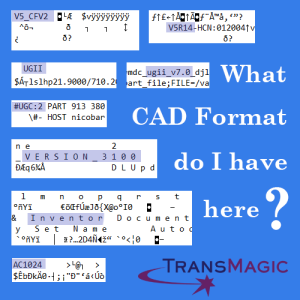
by Brad Strong | Feb 24, 2016 | Blog, CAD Translation, CAD Viewing, Support, What's New
This has happened to all of us at one time or another; how do you know what CAD format you are dealing with?Especially since Unigraphics/NX, and ProE/Creo both use *.prt for parts, for example, which one is it? And what version is that DWG file you got last week? You’ll Need a Text Editor Fortunately, with a simple tool editor such as Windows Notepad or Notepad++, we can tell quite a bit. Here is an index of the most common native CAD formats (CATIA, UG/NX, Pro/E & Creo, SOLIDWORKS, Inventor and Autocad), and how they appear in Notepad: Detecting CATIA Formats CATIA: V4 part and assembly files end in *.model. V5 and V6 3D files end in *.CATPart...
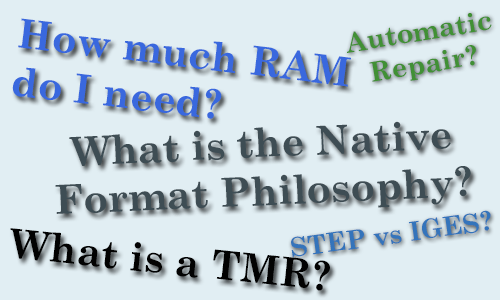
by Brad Strong | Feb 24, 2016 | Blog, CAD Translation, Support
TransMagic is a world-class application for the translation, repair, comparison, visualization & measurement of geometric formats. Even though this powerful software is deceptively easy to use, there are a few points that will make your use of TransMagic more fruitful. Here are some more tips for new TransMagic users: RAM RAM: TransMagic does not have very heavy processor requirements; however, if you are dealing with very large files, then you will need a fair amount of RAM. The rule of thumb is 10x the file size. In the case of your *.CATProduct assembly for example, this means the size of the *.CATProduct files plus all of the subordinate *.CATPart...
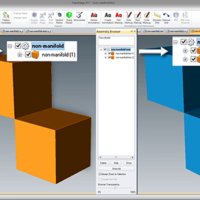
by Brad Strong | Sep 16, 2013 | Blog, CAD Diagnostics, CAD Translation, What's New
That is, what is Non-Manifold Geometry vs Manifold Geometry? The Meaning of ‘Manifold’ Manifold is a geometric topology term that means: To allow disjoint lumps to exist in a single logical body. Non-Manifold then means: All disjoint lumps must be their own logical body. Of course that definition is often more confusing so perhaps the best way to think of Manifold and Non-Manifold is this: Manifold essentially means “Manufacturable” and Non-Manifold means “Non-manufacturable”. In other words manifold means: You could machine the shape out of a single block of metal….and with a non-manifold shape you could not. Example...






